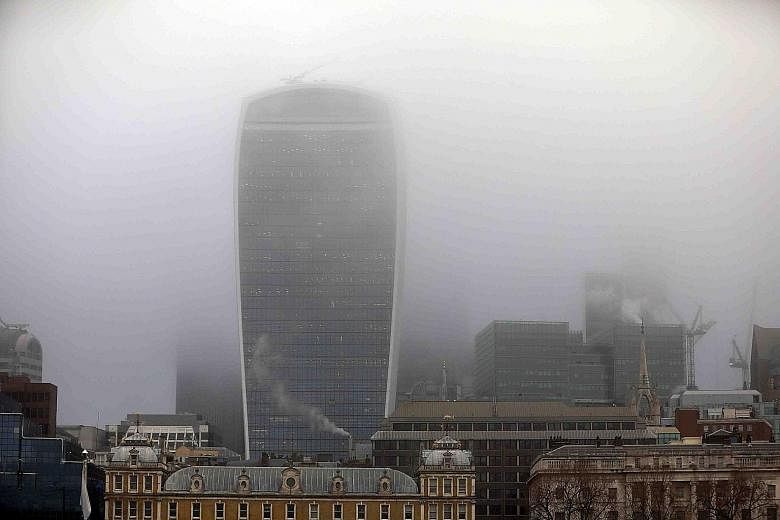LONDON • Every winter, as if on cue, the coughing begins.
With her cough persisting winter after winter, Ms Tara Carey, 43, an international aid worker living in London, became worried she might have contracted tuberculosis during a trip to Africa. She was shocked by a doctor's eventual diagnosis: asthma.
In her view, the only reasonable explanation for her illness was the pollution to which she was exposed over the last six years cycling through thick traffic on Brixton Road, one of London's busiest and most noxious routes. "We don't really realise how much toxic air we breathe in because we're acclimatised to it. It's pernicious," she said.
London is choking from record pollution levels, much of it caused by diesel cars and trucks, as well as wood-burning fires in private homes, a growing trend.
It has been bad enough to evoke comparisons with the Great Smog of December 1952, when fumes from factories and house chimneys are thought to have killed up to 12,000 Londoners. That crisis led to the landmark Clean Air Act in 1956.
-
23,500
Number of pollution linked deaths in Britain each year, according to the Department for Environment, Food and Rural Affairs.
Last Friday, London mayor Saqiq Khan, who has adult-onset asthma, said he would introduce a toxicity charge in central London in October. The tax would cost US$12 (S$17) a day for the most polluting vehicles. He also plans to expand central London's low-emission zone across the capital in 2019, and charge drivers of polluting vehicles US$15 a day to enter. London has had a congestion charge since 2003 to reduce traffic, but the fee's effect on emissions is unclear.
London's air pollution today is different from seven decades ago, and more insidious.
The city's air is now laced with nitrogen dioxide - a toxic gas mostly produced by vehicles with diesel engines. The pollution is linked to 23,500 deaths in Britain each year, according to the Department for Environment, Food and Rural Affairs.
Britain has the highest number of annual deaths from nitrogen dioxide pollution in the European Union after Italy, statistics show. Last week, the EU ordered five members, including Britain, to cut car pollution levels or risk being sent to the European Court of Justice, where they could face huge penalties.
The current problem is partly an unintended consequence of previous efforts to aid the environment. The British government provided financial incentives to encourage a shift to diesel engines because tests suggested that would cut harmful emissions. Yet, it turned out that diesel cars emit on average five times as much emissions in real-world driving conditions, according to a British Department for Transport study.
"No one at the time thought of the consequences of increased nitrogen dioxide emissions from diesel, and the policy of incentivising diesel was so successful that an awful lot of people bought diesel cars," said Ms Anna Heslop, a lawyer at ClientEarth, an environmental law firm that last year forced the British government to produce a better plan to improve air quality.
NYTIMES

